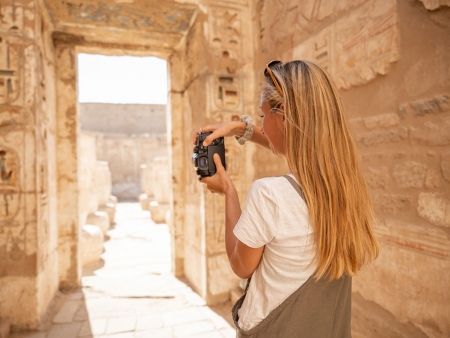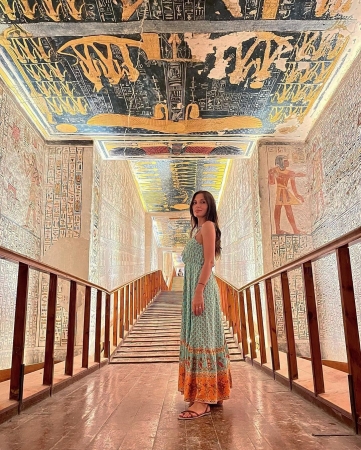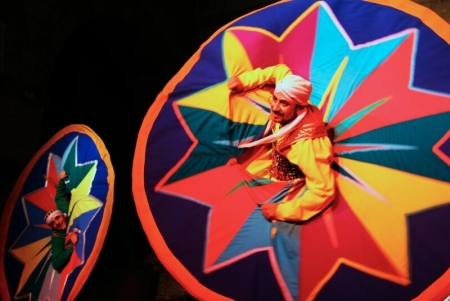-
Home
- Egypt
- Wiki Travel
- Cairo Attractions
- Al-Tannoura Egyptian Heritage Dance Troupe
Al-Tannoura Egyptian Heritage Dance Troupe
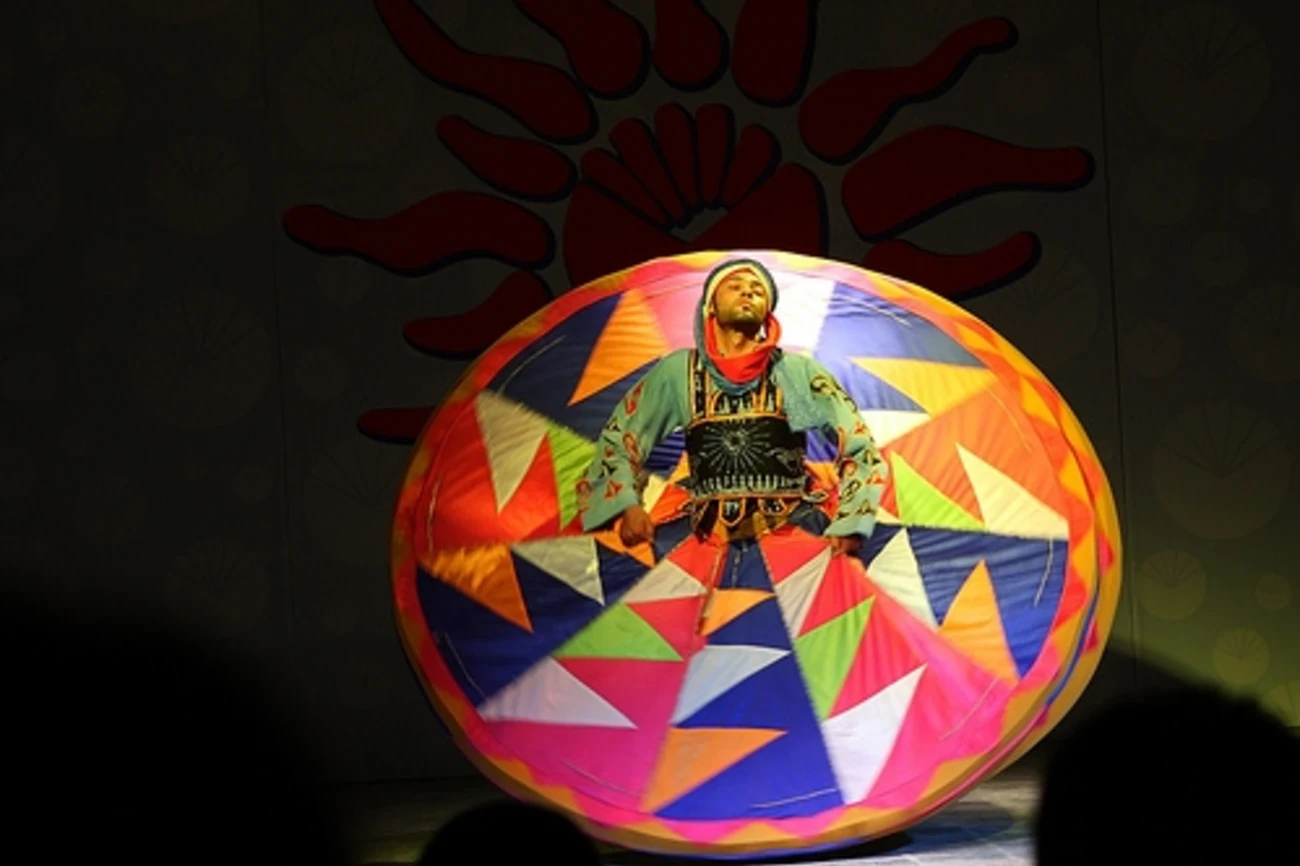
Al-Tannoura Egyptian Heritage Dance Troupe is an architecturally stunning arts centre in El Azhar area in Central Cairo, operating under the Ministry of Culture and the Cultural Development Fund (CDF). Since finalizing restorations to the Wekalet in October 2005, it has become a hot-spot for organizing cultural events; the most popular being the bi-weekly El Tannoura dance performance. The performance is similar to the more commonly known whirling dervishes; however this version of the indigenous dance incorporates instruments and other additional elements.
History of the Area
El Azhar area houses three other cultural centers, which are all worth a visit. They are
Beit El Harrawy, Beit El Sehaimy and El Ghouri Palace. Each brings a variety of cultural activities and events to the area. We chose to visit El Ghouri Palace, to watch Al-Tannoura Egyptian Heritage Dance Troupe.
The original center was built in 1504 A. D by sultan Qunsuwah El Ghouri. During the Mamluk era, the wekalet Sultan El Ghouri was one of several trade points, known at the time as wekala a place where merchants gathered for trade, and also served as a residence for the merchants and their families.
In August 2005, plans on how to develop the building into a cultural center were being considered. At that time there were already three other art centers in the same zone of historic Cairo. The then-director of the place wanted to think of a way to find harmony between the history and the people who live in the area, so El Tannoura performance was a good choice for the center. There are also other kinds of performances at the wekala such as international folk art performance and visiting Arab singers and musicians.
El Tannoura Performance
After arriving in the bustling area surrounding Khan El Khalili, we set about finding the Wekalet El Ghouri Center. We entered an area filled with merchants selling copper and other handcrafts, and in the hub of this area, we found the Center, easily recognizable by its beautiful architecture, as well as the queues of people awaiting the start of the show.The security at the building informed us that the show would start at 8:30 pm, and we instinctively inquired about fees or donations, but were confidently informed that the performance was free of charge. They added, First of all, this is the policy of the Cultural Development Fund. Second, we have to think about the ticket culture. This might be the culture of an Opera House, but not of the people here in the neighbourhood. People here don’t like formal attire and the closed-door attitude, we have to always be welcoming. We also learned that most of the funding comes from either renting the place out for special events or from the gift shop. The centre targets the local residents, but for El Tannoura shows, about 60% of the audience is tourists. While we sat with the audience, a group of performers appeared with an array of instruments ranging from the Daf (tambourine) to the Oud and Ney (flute). After a few solos by various singers, a vocalist appeared on a balcony. This specific vocalist, officially known as the Muezzin, sings of spirituality. The second part of the performance, the Sufi Tannoura Dance (El Darawish) is derived from the dance performed as part of a Sufi ritual. The third part of the performance incorporates a more spectacular dance, more based on the showing of skills and costume design.
Customize Your Dream Vacation!
Get in touch with our local experts for an unforgettable journey.
Plan Your TripThe difference between the two performances
Egyptians developed the Sufi whirling dance to create a show not quite related to spirituality, where the performers have added colorful costumes and rhythmic tones to the music, incorporating Egyptian folk traditions to the religious spiritual aspect. In Sufi dancing. The dancer must be spinning in a certain direction related to the direction of the sun. One hand must be pointed to the sky and the other toward the earth, which symbolizes establishing a connection between the two. The circular movements of the dancer represent the ridding of worldly burdens, until he reaches ecstasy through this attempt to reach heaven. The untying of the belt around the waist towards the end of the dance represents the beginning of his journey to heaven.The performer we personally found most memorable was the principal dancer of the Sufi Tannoura Dance who, encouraged by a troupe of musicians, seemed to enter into a trance. He appeared to reach a level of ecstasy while on stage, possibly due to the dance functioning as an intermediary between him and God. Overall, the dance is full of Sufi symbolism, and having some background knowledge cam make the viewing of the performance more interesting.
Wekalet El Ghouri Arts Center is one of four cultural centres in the El Azhar area. ( Tanoura Show at Wekalet El-Ghouri performs Wednesdays & Saturdays at...8:30 pm)
Egypt Travel Guide
Egypt Oases
- Gara Cave
- Al-Deer
- Badr's Museum
- Bagawat
- Black desert
- Cleopatra bath
- Great Sand Sea
- Mizawaka
- Monastery of Anba Bishoy
- Mountain of the Dead in Siwa | Gebel al-Mawta
- Qarun Lake
- Roman Temple in Deir El-hagar
- Temple of Alexander the Great
- Temple of Amon
- Temple of Dush
- Temple of Hibis
- Temple of Nadura
- The Crystal Mountain | Bahariya Crystal Mountain
- The Monastery of Abu Makar (Makarios) | Egypt
- The Monastery of Baramus | Egypt
- The Monastery of El Suryan | Cairo Attractions
- Therapy in Siwa Oasis
- Valley of Al-Haiz
- Valley of the Golden Mummies
- Wadi Al- Rayan, Protected Area | Fayoum, Egypt
- Wadi El-Natroun | The Monasteries of Wadi El Natrun
- The White Desert in Egypt
- Fayoum Bird-watching Guide
Ports of Call
Red Sea and Sinai
Famous Mosques in Egypt
Transportation guide in Egypt
Egypt Tourist Attractions
Egypt Pyramids
- Djedefre Pyramid | Abu Rawash
- Abu Sir | Egyptian Necropolis & Pyramids
- King Snefru's Pyramid | Egypt
- Old Kingdom Pyramids | Ancient Egypt
- Pyramid Complex of Pepi I
- Pyramid of Amenemhat III
- Pyramid of lahun | Egypt Pyramids
- Pyramid of Meidum
- Pyramid of Neferhetepes | Egypt Pyramids
- Pyramid of Netjerkhet | Egypt Pyramids
- Pyramid of Neferefre
- Pyramid of Sahure | Egypt Pyramids
- Pyramid of Sekhemkhet
- Pyramid of Sesostris III
- Pyramid of Teti | Egypt Pyramids
- Pyramid of Userkaf | Egypt Pyramids
History of Egypt
- The False Doors | Ancient Egypt Secrets
- Egyptian Canopic Jars: What are Canopic Jars?
- Holy Family in Egypt
- king khufu (Cheops) | Kings of Ancient Egypt
- Khafre Statue | King Khafre Pyramid
- Who built the first pyramid in Egypt
- Menkaure (Mykerinos) Pyramid | King Menkaure
- Ramesses IV | Ramses iv Tomb
- Ramses IX Tomb
- The Divine Triad of Dendera
Aswan Attractions
Luxor Attractions
Alexandria Attractions
Cairo Attractions
- Famous Bab al Futuh
- Al-Tannoura Egyptian Heritage Dance Troupe
- Saints Sergius and Bacchus Church
- Abusir Pyramids & The City of The Dead Egypt
- Agricultural Museum Egypt, Cairo
- AL Fustat Historical City
- Bab El Nasr Cairo City Gate
- Beit Al Sennari or Al Sennari House in Cairo
- The Cairo Tower
- Birqash Camel Market in Cairo
- Coptic Cathedral in Abbasiya
- Egyptian Museum Guide
- El Mosky Cairo | Bazaars & Souks
- King Tutankhamun Treasures: Inside the World of Egypt’s Most Famous Pharaoh
- The Mosque of Muhammad Ali Pasha in Cairo
- Royal Mummy Room in The Egyptian Museum
- The Pharaonic Village
- The Great Sphinx of Giza
- Babylon Fortress Facts
- Solar Boat Museum
- Valley Temple of Khafre
- St Mary Egypt Orthodox Church
- Verdi Aida Opera Show in Giza Pyramids Egypt
Explore Ancient Egypt all in one day. Take in the Giza Pyramids of Cheops, Chephren and Mykreinus and the Sphinx before visiting the Grand Egyptian Museum.
Combine the rich heritage of Cairo with a magical 5-day Nile cruise on this Egypt vacation package—a must for any lover of history. Follow the path of the pharaohs in Cairo, then fly continue the path in Luxor, and Aswan.
Do it all in one trip. Start in Cairo, then travel by flight to Aswan and embark on your Nile Cruise and explore the majestic attractions of Egypt between Aswan and Luxor. End your tour with a relaxing time on Hurghada beaches.
Plan Your Trip!
You Might Also Like

The event will welcome 1500 to 5000 guests in the sound and light platform inside the Giza pyramids area. The theme should match the Pharaonic designs and colors.
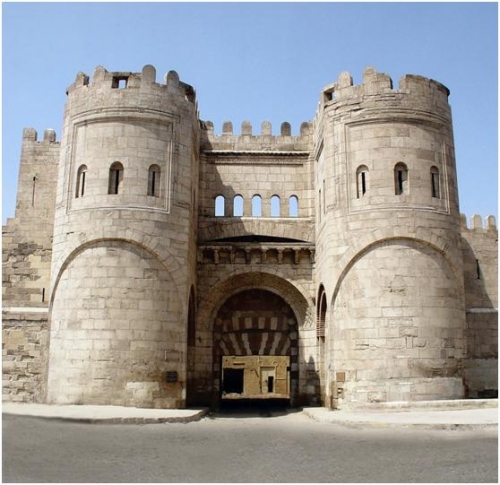
Bab Al Futuh in Cairo was built in 1087 by Badr al-Gamali. It likewise replaced an earlier gate placed somewhat to the South which had been included in the original enclosure wall of Gawhar.

Al-Tannoura Egyptian Heritage Dance Troupe is an architecturally stunning arts centre in El Azhar area in Central Cairo, operating under the Ministry of Culture and the Cultural Development Fund (CDF).
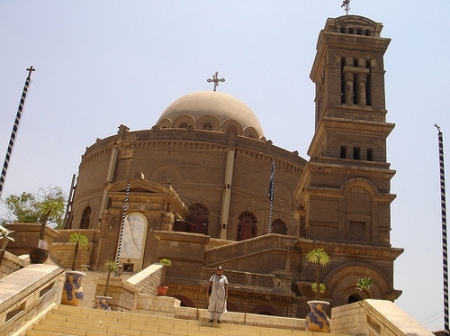
Saints Sergius and Bacchus Church were built to be dedicated to two Martyrs (Sergius and Bacchusand) traditionally believed to have been built on the spot where the Holy Family rested at the end of their journey into Egypt.

Abusir Pyramids and The City of The Dead Egypt is located at 1.2 miles north of Saqqara, but still at some distance to the south of Giza.
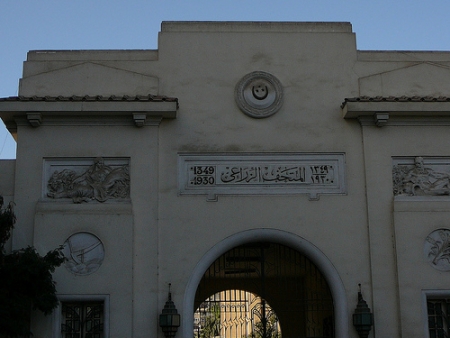
The Agricultural Museum Egypt features a variety of displays about farming practices from ancient times to the present day. Agriculture has played a major role in the Egyptian history and always affected the lives of Egyptians from the days of the pharaohs up to our modern time.
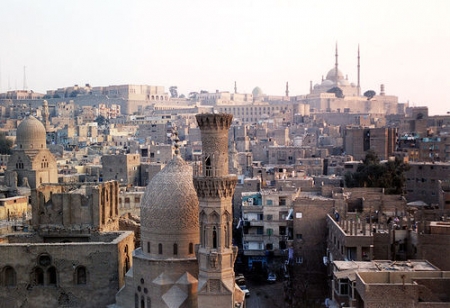
Cairo Fustat is now a part of the 'Old Egypt' area in, Egypt in Al-Fustat City. Egypt is considered the eldest remains in Amr Ibn Alas mosque Al Fustat.

Bab El Nasr in Cairo, which is placed at the northeast corner of the enclosure of Fatimid Cairo, consists of two great square towers, solid for two-thirds of their heights, flanking a very fine arched gateway which is set back 4.54 m.
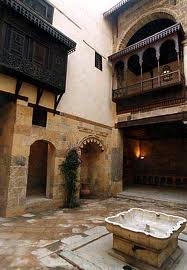
Beit El Sennari is not well known by many tourists who visit Egypt. Situated on a small lane named Haret Monge, just off of a downtown street called Khairat, there are very few tourist attractions nearby
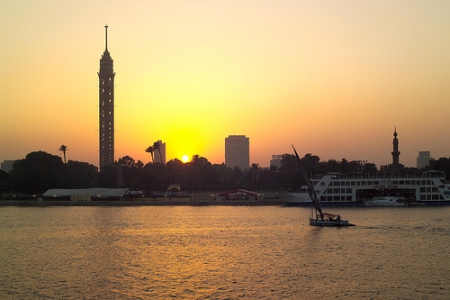
The Cairo Tower or ElGezira tower or ( Brag El qahari) in Arabic language is consider one of the most prominent features of the Egyptian capital .Its partially open lattice-work design is intended to evoke a lotus plant.

Explore Birqash Camel Market in Cairo, where tradition and culture meet. Witness camel trading, local life, and a unique Egyptian market experience.
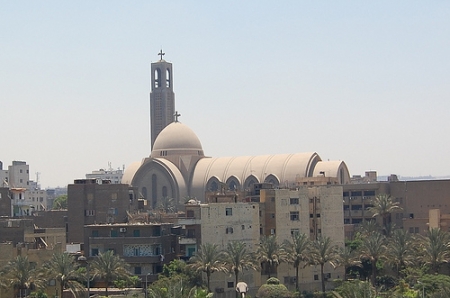
Abbasiya Coptic Cathedral was built in 1968 and inaugurated by President Nasser and Emperor Hilasilasi of Ethiopia when Pope KirolosVI was appointed the Patriarch and Pope of Alexandria and it is considered the largest church in Africa.

Egyptian Museum Cairo contains 42 room. .The museum's ground floor follows the history of ancient Egypt.
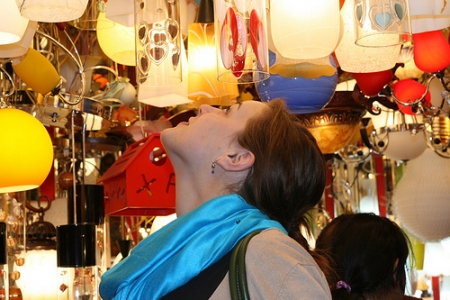
El Mosky Cairo was founded by prince Ezz El Din Mosk; he was a prince in the reign of Al Sultan Salah El Din El Ayobe (Saladin).

Learn about King Tutankhamun treasures and explore the secrets of his tomb, royal rituals, and preserved artifacts.
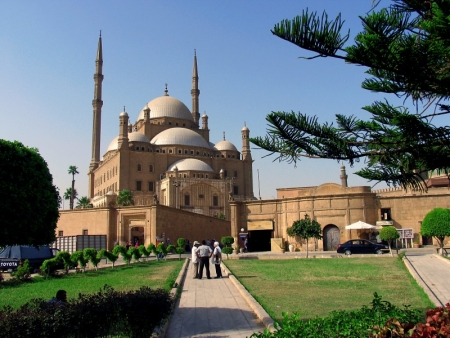
The Mosque of Muhammad Ali is one of the most interesting Mosques in Egypt. It stands proudly on the highest point inside the Citadel of Saladin.
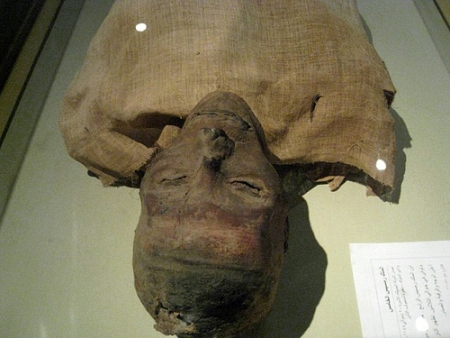
After death, the pharaohs of Egypt usually were mummified and buried in elaborate tombs. Members of the nobility and officials often received the same treatment, and occasionally, common people.
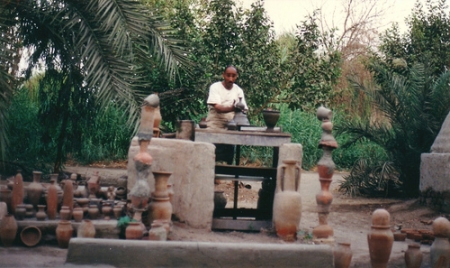
Pharaonic Village is situated in Giza, only a few miles from downtown Cairo. It was built to be a fantastic journey to the days of the pharaohs.
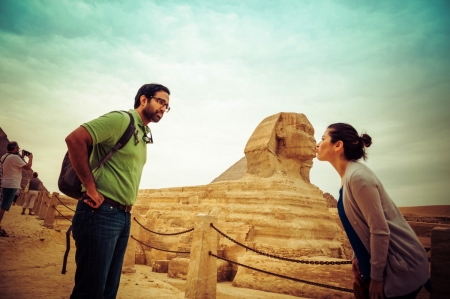
Looking for Great Sphinx Facts? Click here to know when, how and why Sphinx was built?

Babylon Fortress also known as Qasr el Shamee or the candles palace as the towers of the fort were adorned with illuminated candles at the beginning of every month.
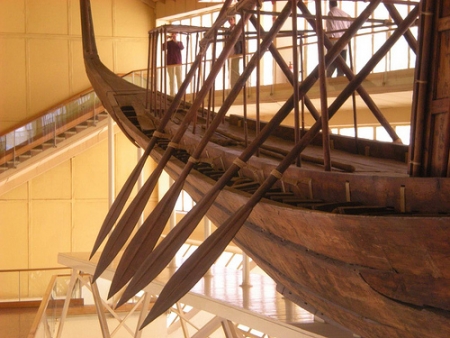
Situated to the south of the Great pyramid, The Solar Boat Museum was established by Kamal El, read more.
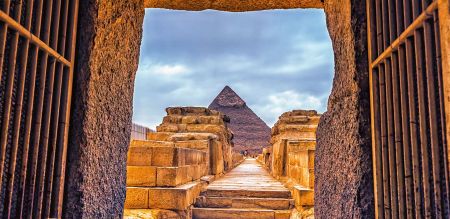
Experience the Valley Temple of Khafre like never before. Explore its purpose, design, and must-see highlights—read the full guide now!
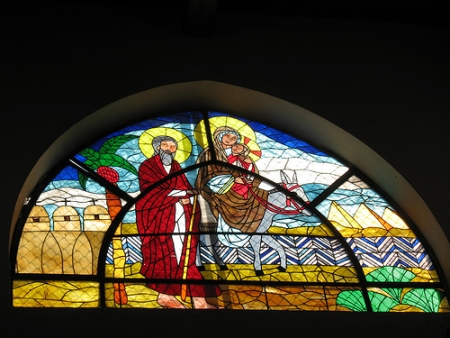
St Mary Church Egypt is situated in Maadi area on the East River bank of the Nile, east of Maadi. It was built as a dedication for the Virgin Mary.


